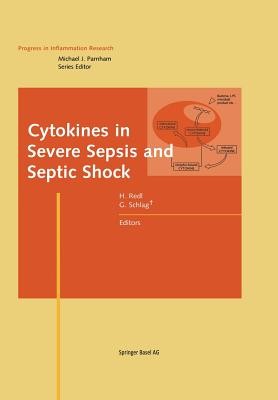
- We will send in 10–14 business days.
- Publisher: Birkhäuser
- Year: 2012
- Pages: 372
- ISBN-10: 3034897596
- ISBN-13: 9783034897594
- Format: 17 x 24.4 x 2.1 cm, softcover
- Language: English
- SAVE -10% with code: EXTRA
Cytokines in Severe Sepsis and Septic Shock (e-book) (used book) | bookbook.eu
Reviews
Description
t Heinz Red! and Gunther Sch!ag Ludwig Boltzmann Institute for Experimental and Clinical Traumatology, Vienna, Austria The word sepsis derives from the Greek meaning decay or rottenness. Tradition- ally this term has been used to describe the process of infection accompanied by the host's systemic inflammatory response. Based on that understanding, previous clin- ical studies have been designed to include only patients with positive blood cultures [1, 2]. However, the frequent occurrence of a septic response without the demon- stration of microorganisms in the circulation has led to a new definition and under- standing of sepsis, mainly as the systemic response of the host to an often unde- tectable microbiological or non-microbiological process [3]. The general consensus is that cytokines are central to the inflammatory response, particularly in sepsis. It is now known that not only Gram-negative but also Gram- positive, viral, and fungal infections initiate the complex cascades of cytokine release. Probably the most important aspect of bacterial action is the release of toxic bacterial products. In particular endotoxin from Gram-negative bacteria (see chap- ter by Schade) and super antigens (see chapter by Neumann and Holzmann), as well as pore-forming toxins [4] from Gram-positive bacteria, induce cytokine formation. The importance of this cytokine release is evident from both diagnostic and thera- peutic (mostly experimental) studies, and the action of cytokines may be the key to our understanding of the pathophysiology of the sepsis syndrome.
EXTRA 10 % discount with code: EXTRA
The promotion ends in 20d.16:55:10
The discount code is valid when purchasing from 10 €. Discounts do not stack.
- Publisher: Birkhäuser
- Year: 2012
- Pages: 372
- ISBN-10: 3034897596
- ISBN-13: 9783034897594
- Format: 17 x 24.4 x 2.1 cm, softcover
- Language: English English
t Heinz Red! and Gunther Sch!ag Ludwig Boltzmann Institute for Experimental and Clinical Traumatology, Vienna, Austria The word sepsis derives from the Greek meaning decay or rottenness. Tradition- ally this term has been used to describe the process of infection accompanied by the host's systemic inflammatory response. Based on that understanding, previous clin- ical studies have been designed to include only patients with positive blood cultures [1, 2]. However, the frequent occurrence of a septic response without the demon- stration of microorganisms in the circulation has led to a new definition and under- standing of sepsis, mainly as the systemic response of the host to an often unde- tectable microbiological or non-microbiological process [3]. The general consensus is that cytokines are central to the inflammatory response, particularly in sepsis. It is now known that not only Gram-negative but also Gram- positive, viral, and fungal infections initiate the complex cascades of cytokine release. Probably the most important aspect of bacterial action is the release of toxic bacterial products. In particular endotoxin from Gram-negative bacteria (see chap- ter by Schade) and super antigens (see chapter by Neumann and Holzmann), as well as pore-forming toxins [4] from Gram-positive bacteria, induce cytokine formation. The importance of this cytokine release is evident from both diagnostic and thera- peutic (mostly experimental) studies, and the action of cytokines may be the key to our understanding of the pathophysiology of the sepsis syndrome.


Reviews